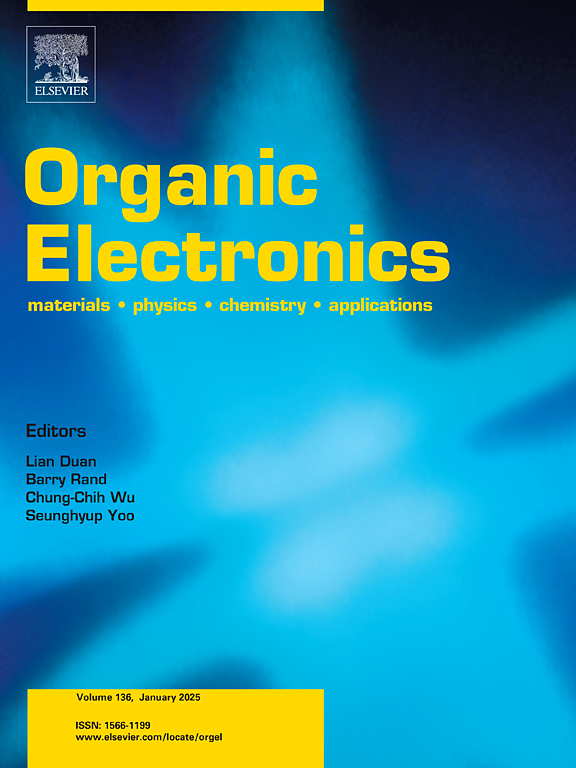Hydroxyethyl cellulose passivation for high-efficiency pure-red perovskite light-emitting diodes
IF 2.6
4区 工程技术
Q3 MATERIALS SCIENCE, MULTIDISCIPLINARY
引用次数: 0
Abstract
Perovskite light-emitting diodes (PeLEDs) have exhibited tremendous potential for commercial applications in the fields of displays, lighting, and information technology. For achieving pure red electroluminescence, quasi-two-dimensional (Q-2D) perovskite based on Br/I mixed halides has been commonly used. However, during the in-situ crystallization process of perovskite films via low-temperature solution methods, the complexity of coordination among various ions leads to the presence of uncoordinated ions, resulting in numerous defects in the perovskite films. These defects significantly impact the performance and stability of PeLEDs. In this work, hydroxyethyl cellulose (HEC) was incorporated into the hole transport layer (HTL) to passivate the defects in perovskite films. Experimental results showed that the hydroxyl groups in HEC interacted with Pb2+/K+/PEA+ ions in the perovskite, contributing to the passivation of defects. Simultaneously, the addition of HEC inhibited the low-dimensional phases (n = 1, 2) and enhanced the high-dimensional phase (n = 3) in the Q-2D perovskite films. The optimized distribution of n phases was favorable for the radiative recombination. After the introduction of HEC, the external quantum efficiency (EQE) of pure red PeLEDs at 636 nm showed a significant improvement compared to the control device, from 5.31 % to 6.82 %. This strategy provides an excellent alterative to improve the electroluminescent efficiency of red PeLEDs.

高效纯红色钙钛矿发光二极管用羟乙基纤维素钝化
钙钛矿发光二极管(PeLEDs)在显示、照明和信息技术领域显示出巨大的商业应用潜力。为了实现纯红色电致发光,通常使用基于Br/I混合卤化物的准二维(Q-2D)钙钛矿。然而,在低温溶液法制备钙钛矿薄膜的原位结晶过程中,由于各种离子之间配位的复杂性,导致了不配位离子的存在,导致钙钛矿薄膜中存在大量缺陷。这些缺陷严重影响了发光二极管的性能和稳定性。在这项工作中,羟乙基纤维素(HEC)加入到空穴传输层(HTL)中,以钝化钙钛矿薄膜中的缺陷。实验结果表明,HEC中的羟基与钙钛矿中的Pb2+/K+/PEA+离子相互作用,有助于缺陷的钝化。同时,HEC的加入抑制了Q-2D钙钛矿膜中的低维相(n = 1,2),增强了高维相(n = 3)。优化后的n相分布有利于辐射复合。引入HEC后,纯红色pled在636 nm处的外量子效率(EQE)较对照器件有显著提高,从5.31%提高到6.82%。该策略为提高红色pled的电致发光效率提供了一个很好的选择。
本文章由计算机程序翻译,如有差异,请以英文原文为准。
求助全文
约1分钟内获得全文
求助全文
来源期刊

Organic Electronics
工程技术-材料科学:综合
CiteScore
6.60
自引率
6.20%
发文量
238
审稿时长
44 days
期刊介绍:
Organic Electronics is a journal whose primary interdisciplinary focus is on materials and phenomena related to organic devices such as light emitting diodes, thin film transistors, photovoltaic cells, sensors, memories, etc.
Papers suitable for publication in this journal cover such topics as photoconductive and electronic properties of organic materials, thin film structures and characterization in the context of organic devices, charge and exciton transport, organic electronic and optoelectronic devices.
 求助内容:
求助内容: 应助结果提醒方式:
应助结果提醒方式:


